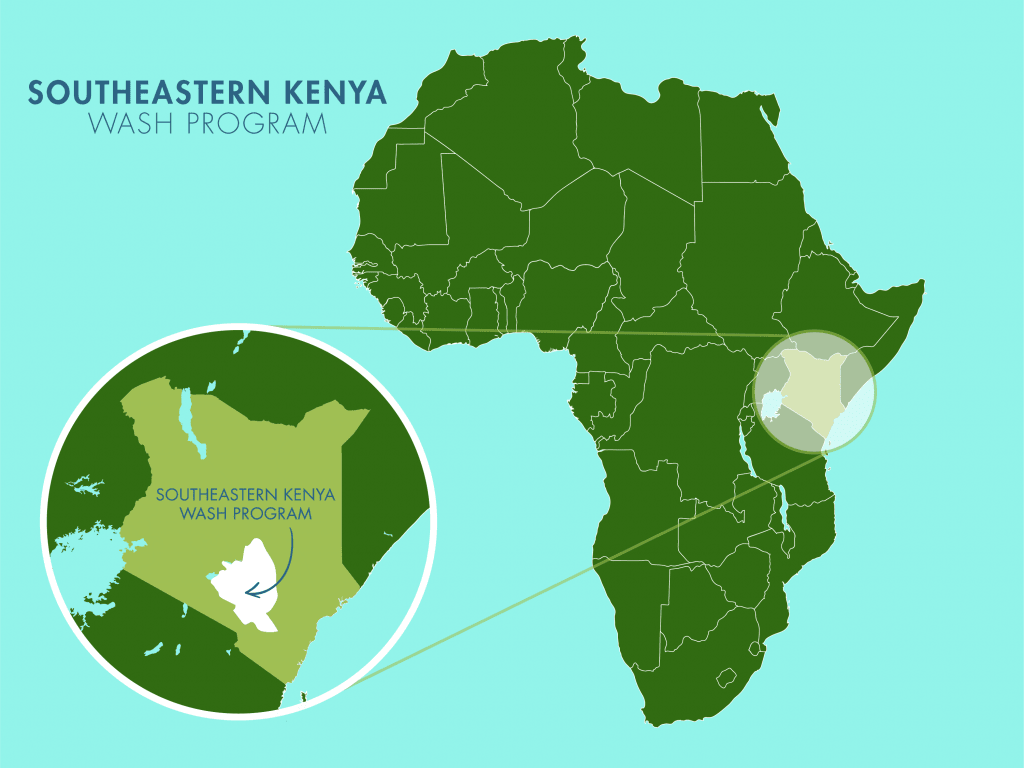The Katwenye Community, home to 1,238 people, urgently needs a reliable, safe, and accessible source of water. Currently, residents rely on scoop holes dug into a distant dry riverbed to meet their daily needs — an exhausting and unsafe method that provides only limited amounts of poor-quality water.
Each trip to fetch water takes at least two hours over harsh, dry, and rocky terrain. Even after this challenging journey, the water they collect often smells and tastes unpleasant, posing serious risks of waterborne diseases. This daily struggle robs the community not only of time and energy but also of their health and opportunities to make progress in their daily life.

Walking for water.
Field Officer Alex Koech shared his perspective: "The scoop hole is located far away, forcing residents to spend about three hours daily to fetch water, which leaves little time and effort to focus on crucial chores like herding livestock, preparing their farms, or conducting hygiene duties. Apart from being contaminated and exposing residents to waterborne diseases like dysentery and typhoid, treating these infections is costly because of the meager income acquired from drought-struck farms or livestock."
"The children in the community perform poorly in school because of absenteeism caused by water-related maladies or lack of school fees. It is also hard for them to focus in school because they spend most of their evenings, weekends, and holidays helping their parents to fetch water. The scoop hole cannot provide enough water for irrigating farms, which has contributed to food insecurity," Alex continued.
14-year-old Tabitha is familiar with the overwhelming and exhausting task.

Tabitha.
"Fetching water takes a long time because the scoop hole is far from our home, and we have to walk for over an hour to get there. Sometimes when we arrive, there is a long queue, and the water trickles in slowly—especially during drought. We wait for hours just to fill one jerrycan," shared Tabitha.
"When there are many people, the bigger or older ones push us behind, and we have to wait much longer. Sometimes older children or adults are unkind. They shout at us to move or tell us to wait longer. It makes me feel like my time and needs don’t matter as much as theirs," Tabitha reported.

Tabitha scoops water.
It is not that Tabitha is unwilling to help, but as a child, she wishes she could pay attention to other things, ones that will impact her future.
"I feel tired and discouraged. Sometimes I wish I could just stay and do my homework or play. But I know I have to help, so I go—even though it’s exhausting and the water isn’t always clean. Sometimes I am too tired in class and can’t concentrate well. When I fetch water late in the evening, I don’t get enough time to study or rest. It affects my exam performance," Tabitha lamented.
Tabitha hopes to be a doctor in the future, but until she can access clean water near her home, that dream feels unattainable.
"If I didn’t have to spend so much time fetching water, I would use that time to study, revise for exams, and play with my friends. I would also help my mother with other chores at home. It would make me feel less tired and more focused on schoolwork," she continued.
We plan to help make Tabitha's dream a reality by installing a well, allowing her to collect safe water quickly and efficiently, so she has more time for learning and building a brighter future.
Solving the water crisis in this community will require a multifaceted system that will work together to create a sustainable water source that will serve this community for years to come.
Note: Our proposed water point can only serve 300 people per day. We are working with the community to identify other water solutions that will ensure everyone has access to safe and reliable drinking water.
Steps Toward a Solution
Our technical experts worked with the local community to identify the most effective solution to their water crisis. Together, they decided to construct a protected dug well and sand dam.
Protected Dug Well Near A Sand Dam
Once a sand dam is installed and has time to mature by gathering sand and silt, groundwater increases significantly in the entire area surrounding the project. This provides a reliable source of groundwater that wasn’t possible before. As a result, wells can be constructed to take advantage of the water stored and filtered in the collected sand.
During the construction of the protected dug well, we will build a platform for the well and attach a hand pump. The community will gain a safe, enclosed water source capable of providing approximately five gallons of water per minute.
This protected dug well will be connected to a sand dam to obtain water.
Community Education & Ownership
Hygiene and sanitation training are integral to our water projects. Training is tailored to each community's specific needs and includes key topics such as proper water handling, improved hygiene practices, disease transmission prevention, and care of the new water point. Safe water and improved hygiene habits foster a healthier future for everyone in the community.
Encouraged and supported by our team's guidance, the community elects a water user committee representative of its diverse members. This committee assumes responsibility for maintaining the water point, organizing community efforts, and gathering fees to ensure its upkeep.

 Protected Dug Well
Protected Dug Well
 Rehabilitation Project
Rehabilitation Project


















